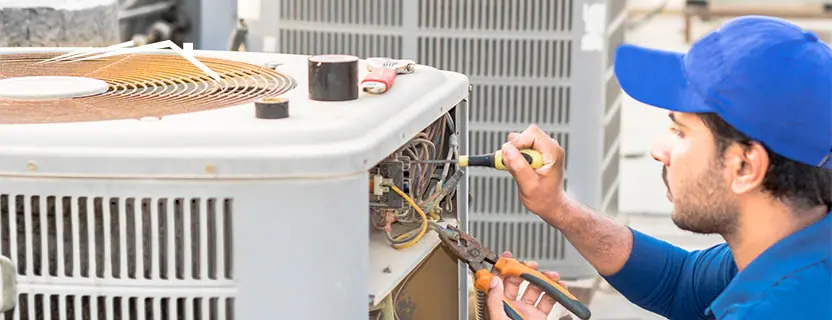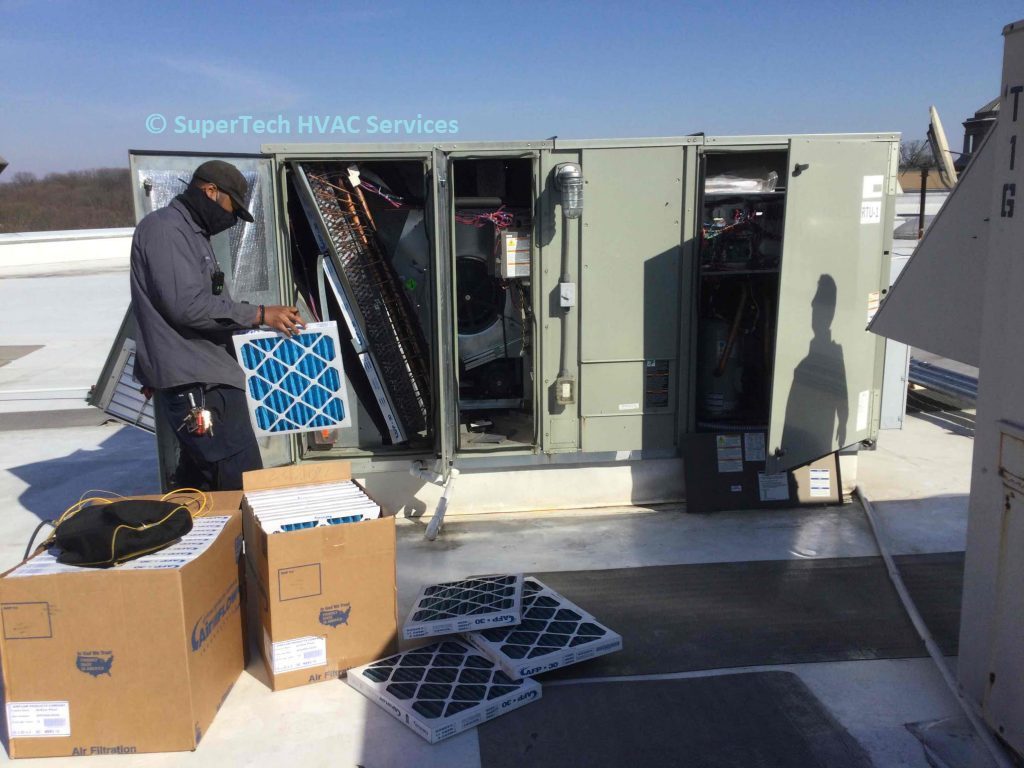Just How a Heatpump and Heating System Work Together to Enhance Your Home's Home heating Efficiency
Understanding how a heat pump and heater interact is vital for homeowners seeking efficient home heating solutions. Each system has its toughness, supplying a balanced approach to home convenience. The heat pump excels in moderate temperatures, while the heating system delivers quick warmth during extreme cold. This synergy not only lowers power costs but likewise enhances the lifespan of both appliances. What elements affect this partnership, and how can property owners maximize their advantages?
Understanding Warmth Pumps: Exactly How They Work
Although lots of people might be unknown with their inner operations, heat pumps play a necessary function in modern-day furnace. These devices operate by transferring heat from one place to one more, making use of the concepts of thermodynamics. In chillier months, a heatpump extracts warm from the outdoors air, ground, or water, and transfers it inside to heat the living room. Conversely, during warmer months, it can turn around the process, functioning as an air conditioning unit by removing warmth from inside to the outside.Heat pumps include an evaporator, compressor, condenser, and growth valve. The cooling agent within the system soaks up heat as it evaporates at low temperature levels and stress. The compressor after that enhances the pressure and temperature level of the refrigerant, permitting it to launch warmth as it condenses. This reliable procedure can substantially decrease energy usage contrasted to conventional heating methods, making heatpump a lasting selection for environment control in homes.
The Function of Furnaces in Home Home Heating
Furnaces play a crucial role in home heating by supplying a reputable resource of warmth during the cooler months. They operate by generating heat with burning or electric resistance, dispersing it throughout the home using air ducts or glowing systems. The effectiveness of a heating system is typically determined by its Yearly Fuel Utilization Efficiency (AFUE) ranking, which shows just how successfully the unit converts gas right into heat.Furnaces can utilize various power sources, including natural gas, electricity, oil, or gas, enabling house owners to select the most appropriate option for their needs. Unlike warm pumps, which may struggle in severe chilly, heating systems preserve regular efficiency, guaranteeing that interior temperature levels continue to be comfortable no matter of outdoor problems. Furthermore, modern heaters commonly come furnished with innovative technology, such as variable-speed blowers and wise thermostats, boosting their efficiency and responsiveness. This flexibility makes heating systems an essential component in comprehensive home heating methods.

Benefits of Making Use Of Both Systems With Each Other
Incorporating the staminas of both heaters and heatpump can lead to a much more efficient and efficient home heating solution. Making use of both systems enables home owners to take advantage of the heatpump's energy efficiency during milder temperatures while counting on the furnace for even more severe cold conditions. This twin method can greatly lower power prices, as heatpump take in much less electrical power than conventional home heating approaches when temperature levels are moderate.Additionally, making use of both systems with each other can boost comfort levels in the home. Heatpump can offer regular, also heating, while heaters can swiftly increase ambient temperatures when required. Moreover, the integration of both systems can prolong the lifespan of devices by reducing wear and tear on each unit, as they share the workload. Inevitably, home owners can take pleasure in a well balanced, cost-effective heating remedy that adjusts perfectly to differing climate condition, making certain a warm and inviting home throughout the cold weather.
How Warmth Pumps and Furnaces Complement Each Various Other
They develop a complementary heating system that makes the most of performance and convenience when homeowners integrate warmth pumps and furnaces. Warmth pumps run by moving heat from the outside air or ground, making them extremely effective in modest climates. They stand out throughout milder temperatures, providing affordable home heating. On the other hand, furnaces produce warm with burning or electric resistance, providing strong, instant warmth throughout extreme cold conditions.The combination of these two systems enables for vibrant changes based on temperature level variations. Throughout warmer months or milder winter months days, the warmth pump can take the lead, preserving power and reducing expenses. As temperatures drop, the heating system can perfectly engage, ensuring regular heat throughout the home. This harmony not just enhances energy use additional resources yet additionally enhances the life-span of both systems, as each unit runs within its optimal efficiency variety. Together, they develop a balanced setting that adjusts to varying climate needs.
Maximizing Efficiency: Tips for Homeowners
Homeowners can enhance their home heating efficiency via several practical approaches. Developing a regular maintenance schedule, incorporating smart thermostat innovation, and executing reliable insulation and sealing services are crucial steps. These actions not only boost convenience but also decrease energy expenses.
Regular Maintenance Set Up
To ensure maximum heating efficiency, establishing a regular upkeep routine is vital for any type of home. House owners ought to focus on routine evaluations of both warmth pumps and heating systems to identify peak efficiency. This includes altering air filters each to 3 months, as clogged filters can significantly minimize performance. Additionally, scheduling professional maintenance at the very least yearly allows professionals to recognize and resolve possible issues prior to they rise. Home owners need to additionally clean the heatpump's outdoor unit to avoid debris accumulation that can redirected here prevent air flow. By sticking to a normal maintenance schedule, property owners not only boost their heater' performance but additionally expand their lifespan, bring about better convenience and decreased energy expenses throughout the cooler months.
Smart Thermostat Integration
Incorporating a wise thermostat right into a home heating unit can substantially improve power efficiency, particularly as it enables precise control over temperature settings. These gadgets can find out the home owner's timetable and choices, immediately changing the temperature to maximize comfort while lessening energy usage. They can reduce home heating during times when the home is unoccupied, decreasing unnecessary usage. Many wise thermostats also supply real-time power usage data, enabling home owners to make informed decisions concerning their home heating behaviors. Additionally, remote access using mobile phone apps permits individuals to change settings from anywhere, guaranteeing the home is warm upon return. In general, wise thermostat assimilation not only enhances convenience however significantly adds to power cost savings and efficiency.
Insulation and Securing Solutions
Smart thermostats play a vital duty in power performance, but their effectiveness can be considerably improved by appropriate insulation and securing solutions. Property owners must focus on insulating wall surfaces, floors, and attic rooms to reduce warm loss. Top notch insulation products, such as spray foam or fiberglass, can significantly improve thermal resistance. In addition, sealing voids around windows, ducts, and doors avoids cold air infiltration and warmth getaway. Weatherstripping and caulking are efficient techniques for addressing these leakages - furnace replacement. Regular inspections for air leakages, together with using blower door examinations, can assist recognize problem areas. By purchasing insulation and sealing, home owners can enhance the performance of their heating unit, eventually causing minimized power usage and lower utility bills
Common Misconceptions About Warmth Pumps and Furnaces
What false impressions border heatpump and heaters? Lots of people erroneously think that warm pumps are inefficient in chillier environments. In truth, contemporary warm pumps are made to run efficiently also in low temperatures, giving reputable heating throughout wintertime. Another typical myth is that heaters are constantly more reliable than heatpump. Nevertheless, this depends upon the details power sources and efficiency ratings of the devices in inquiry. Some might likewise think that using both systems concurrently is unnecessary, however in truth, this combination can maximize heating efficiency, particularly throughout severe weather condition problems. Furthermore, individuals frequently assume that heat pumps require constant upkeep, when truthfully, they have comparable upkeep needs to standard furnace. By debunking these misconceptions, homeowners can make more informed decisions concerning their home heating alternatives, ultimately causing enhanced convenience and energy effectiveness in their homes.
Maintenance Considerations for Combined Equipments

Regularly Asked Inquiries
Can Heat Pumps Work Properly in Very Cold Climates?
Heatpump can struggle in exceptionally chilly environments due to reduced effectiveness and warm removal constraints. Improvements in modern technology have actually led to versions made for much better performance in such conditions, boosting their stability in rough atmospheres.
Just How Long Do Warm Pumps and Furnaces Typically Last?
Heatpump generally last 15 to 20 years, while furnaces have a life-span of 15 to thirty years. Routine maintenance can prolong their long life, guaranteeing reliable operation and minimizing the demand for early substitutes.

What Is the Typical Cost of Setting Up Both Systems?
The average expense of setting up both a heatpump and a heater typically ranges in between $5,000 to $10,000 - ductless mini splits. Factors affecting this price consist of system dimension, installment intricacy, and local labor rates
Exist Tax Rewards for Utilizing Energy-Efficient Heating Systems?
Lots of property owners inquire about tax obligation rewards for energy-efficient heater. Various government and state check this site out programs often use rebates or credit reports, urging the adoption of lasting technologies to decrease energy usage and promote environmental duty.
Exactly how Do I Select the Right Size Warm Pump and Furnace?
Picking the best size heat pump and furnace entails determining the home's square video footage, taking into consideration insulation quality, and assessing local environment. Consulting a specialist can guarantee perfect system performance and energy efficiency based on particular demands. heat pump installation ooltewah tn. Understanding exactly how a warm pump and furnace work together is vital for property owners seeking efficient heating solutions. In cooler months, a warm pump essences heat from the outdoors air, ground, or water, and transfers it indoors to warm up the living space. When homeowners incorporate warmth pumps and heaters, they produce a complementary heating system that maximizes efficiency and convenience. Warmth pumps operate by moving heat from the outdoors air or ground, making them very reliable in moderate climates. Warmth pumps can have a hard time in exceptionally cold environments due to decreased performance and heat extraction restrictions